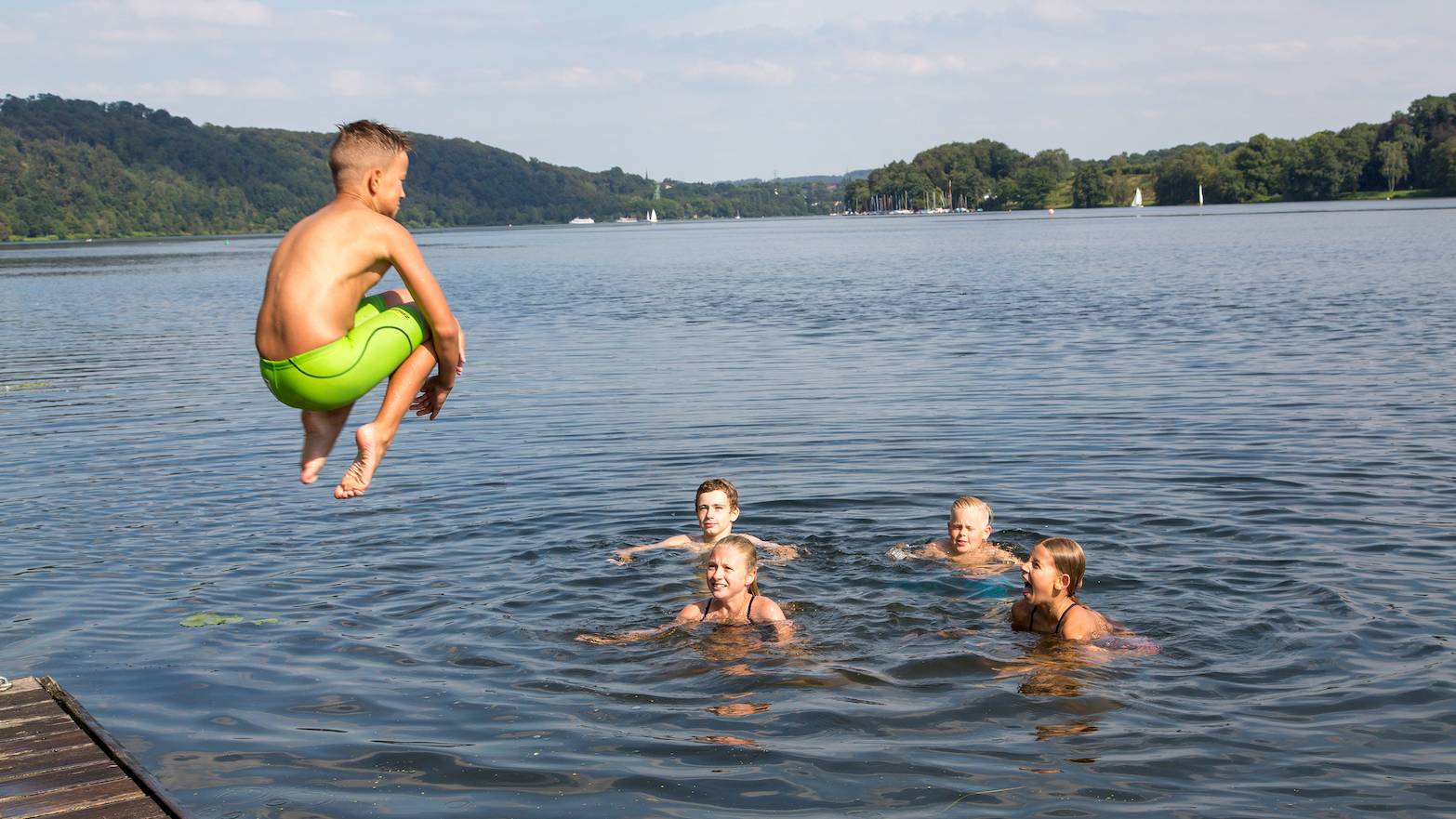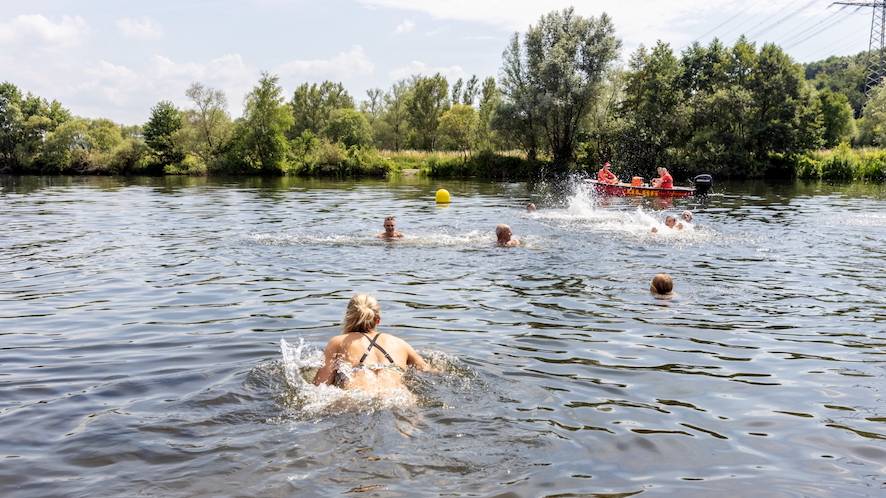03:04

For decades, tons of industrial waste was being dumped into the rivers and lakes of Germany's Ruhr valley, a nearly 3000-square-kilometer area of coal mines, coal smelting and steel manufacturers.
At its worst, levels of chemical pollution and heavy metal deposits, were 100 times higher than today, forcing authorities in 1973 to ban a favorite pastime in the 220 kilometer Ruhr river, swimming.
Despite reservoirs, water treatment plants and the eventual closure of some polluting factories, it wasn't until 2010 that a project was established focused on bringing back the area's once popular bathing sites.
Safe Ruhr project
Funded by the German Federal Ministry of Education and Research, the 'Safe Ruhr Project' called on all interested parties to present their ideas.
One of the project's integral participants was Ruhrverband, an organization responsible for the water management in the catchment area of the Ruhr river, on which nearly five million people also rely for drinking water.

After decades of high pollution levels in the Ruhr river, it's elgal to swim there once again. /Jochen Tack/Stadt Essen
After decades of high pollution levels in the Ruhr river, it's elgal to swim there once again. /Jochen Tack/Stadt Essen
"We spent more than €3.4 million [$3.64m] on this project," says Norbert Jardin, Ruhrverband's CEO. "We investigated all hygienic parameters which are critical in regards to swimming in surface water, but the very special feature of this project was that we included from the very first day, all affected or interested stakeholders."
This included the public, fishermen and women, environmental organizations and even water rescue teams.
READ MORE
What we know about the Israel-Hamas truce deal
German police raid pro-Palestinian and far right properties
Sweden threatens to deport law-breaking immigrants
"We discussed very intensively what are the expectation of the public, what is possible, for example, from the municipality to ski again in the Ruhr and what are the factors affecting the water quality."
Extensive wastewater treatment was conducted and heavily monitored while an early warning system was established to predict any fluctuations in water quality.
Swimming reopens
"And then in May 2017," Jardin proudly recalls, "a swimming site was officially opened. More than 40 years after it had been forbidden in the river Ruhr, swimming was again officially allowed."
Today there are three official swimming sites along the Ruhr river. But the project has also opened up other activities on and off the water.

In 1973, swimming was banned in the Ruhr river due to heavy pollution, but since 2017, things have changed. /CGTN Europe
In 1973, swimming was banned in the Ruhr river due to heavy pollution, but since 2017, things have changed. /CGTN Europe
Local resident Daniel spends every free minute he can fishing at lake Baldeney just south of the city of Essen. It's the largest of the six river Ruhr reservoirs, and the first swimming spot to be reopened in 2017.
"The water is now very, very clear," he tells CGTN. "There are always a lot of people here with stand up boards on the water and you meet sailors and anglers every few meters."
82-year-old Essen resident Friedrich Hans, who remembers swimming in the Ruhr as a child, tells CGTN he is very proud of what the city has done and walks along the river every day now.
"It's peaceful being here at the lake," he smiles. "There is sailing. There are international regattas in the world championships that have already been here. So it was always worth being here."
Every year Ruhrverband releases an annual report about the water quality and ecology of the Ruhr river, "in order to have an official and publicly available sign of the improvements," says Jardin.
The safe Ruhr project is one example of how optimizing wastewater utilization is helping to build sustainable water resources. "Today the water quality is the best ever since the industrialization of this region," Jardin adds.

Subscribe to Storyboard: A weekly newsletter bringing you the best of CGTN every Friday